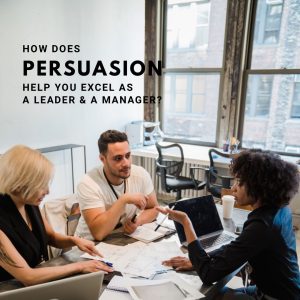
MINDFUL LEADERSHIP; WHAT & HOW…
MINDFUL LEADERSHIP; WHAT & HOW… Dear Leaders, A few days ago, I was consulting with an entrepreneur who was admired for his sharp mind

Dear Leaders,
A few days ago, I was consulting with an entrepreneur who was admired for his sharp mind and rapid decision-making. But he confided in me during one session, saying, “I feel like I’m always on edge. Always reacting. I miss the days when I felt centered.”
That struck a chord.
In today’s high-pressure world, many leaders move from one fire to another, one meeting to the next, without ever pausing. The cost? Creativity suffers. Decision-making gets clouded.
Relationships fray. And the soul of leadership gets buried under urgency.
Mindful leadership isn’t about slowing down productivity—it’s about showing up fully. It’s about presence, not pressure. It’s about being responsive, not reactive. This edition of “The Leader’s Briefcase” dives into how mindfulness is becoming the new trait of great leadership.
What Is Mindful Leadership, Really?
It was 2014 when Satya Nadella took over as the CEO of Microsoft. The company had the products, the people, and the money—but something was off. Internally, employees described the culture as combative and closed. Innovation was stalling.
Satya didn’t begin with a strategy overhaul. Instead, he brought something radical into the boardroom: empathy. Listening. Self-awareness. A culture of mindfulness.
That’s what mindful leadership looks like.
Mindful leadership is not a spiritual luxury; it’s a practical necessity. It’s about being fully present, moment by moment, with clarity and compassion. Instead of reacting from fear or ego, mindful leaders choose conscious, wise responses.
And the result? Microsoft transformed. Its market cap tripled. Employee morale soared. Innovation reignited.
In essence, mindful leadership is about:
It’s not soft. It’s strong, steady, and strategic.
Leadership Lens: 5 Core Traits of a Mindful Leader
I came across this short article on Priya, a department head in a multinational firm. Her team once described her as unpredictable. But everything changed after a health scare prompted her to embrace mindfulness.
Over time, she began journaling, meditating, and practicing non-reactive leadership. Her transformation was visible—and contagious. Her team’s engagement scores went up. Deadlines were met with less stress. And conflicts were resolved faster.
Here are the five traits to embody:
1. Self-Awareness Priya became aware of her triggers and emotional states. Like a good pilot, she learned to read her dashboard.
2. Empathetic Listening She started listening with curiosity, not judgment. Her team felt seen.
3. Non-Reactive Decision Making No more impulsive decisions. She paused, reflected, and chose wisely.
4. Presence Under Pressure In high-stakes meetings, she modeled calm. Her energy anchored the room.
5. Purpose-Driven Focus Her choices aligned with her deeper values, creating consistency and trust.
Mindful leaders don’t just manage tasks; they shift mindsets.
Mind in Business: The ROI of Mindfulness at Work
Here’s why mindfulness works:
In business, clarity is currency. Mindfulness pays.
Quick Guide: 7 Practices to Build Mindfulness into Your Leadership Routine
Leaders often ask, “But how do I actually do mindfulness?”
Here are 7 quick, high-impact practices:
1. 3-Minute Breathing Space Before a meeting, close your eyes. Inhale deeply. Exhale slowly. Repeat. Your nervous system will thank you.
2. Mindful Mornings Begin the day without screens. Try journaling or just 5 minutes of silence.
3. Focused Listening Practice Pick one conversation daily to listen without interrupting. People notice.
4. One-Minute Pauses Between tasks, breathe and reset. Ask: “What energy am I carrying into this next moment?”
5. Gratitude Check End your day by writing 3 work-related things you’re grateful for.
6. No-Phone Meetings Create tech-free zones in your week. Watch team presence improve.
7. Friday Reflection Ritual Each Friday, ask yourself: What did I handle well? What would I do differently next week?
Small steps. Big impact.
Self-Coaching Exercise: The Power Pause Framework
Imagine this:
You’re about to respond to an email from a client. Your fingers are poised over the keyboard, ready to fire back. Instead, you take a PAWS.
P – Pause Hands off the keyboard. Breathe.
A – Acknowledge “I’m feeling defensive and frustrated.”
W – Widen the View “What might be behind their tone? What else could be true?”
S – Shift to Intention “I want to maintain trust. Let me respond with professionalism.”
This 60-second exercise can save relationships, reputations, and results.
From Chaos to Clarity: Leadership Stories of Inner Awareness
Theres another story of Ritika, I came across; she ran a fast-paced design agency in Mumbai. She was a perfectionist, a night owl, and a control freak. Her team respected her, but feared her too.
One day, her body gave her a warning: extreme fatigue and anxiety attacks.
During recovery, she began journaling her leadership emotions. She introduced a “silent hour” at work, delegated more, and replaced judgment with inquiry.
Within 6 months:
Community Call: How Do You Lead with Mindfulness?
Have you ever:
We want to hear your stories. Share your mindful leadership moment with us. Email me at vikram@vikrampandit.com or tag me on LinkedIn with #TheLeadersBriefcase.
We’ll feature your wisdom in next month’s issue!
References:
https://counselingcentergroup.com/thich-nhat-hanh
https://www.amazon.com/Chaos-Clarity-Mastering-Leadership-Management/dp/1068978147

MINDFUL LEADERSHIP; WHAT & HOW… Dear Leaders, A few days ago, I was consulting with an entrepreneur who was admired for his sharp mind

How does Persuasion help you excel as a leader and a manager? Persuasion in context with leadership… In the context of leadership, persuasion refers to

INFLUENCE TO INSPIRE A leader is a person who inspires, guides, and influences others towards a common goal or vision. A leader is someone who

ALIGNING YOUR EXPECTATIONS WITH TEAM’S PERFORMANCE Aligning a leader’s expectations with the team’s performance is crucial for the success in setting and achieving the organisation’s

Are you listening…actively? Active listening is a crucial skill for any professional, regardless of their field or position. By actively listening, professionals can enhance their

CONNECTING AT THE CORE As humans, we find connecting so natural and organic in the way we start belonging to each other. While I interpret

Copyright 2024 © Vikram Pandit | All Rights Reserved
How can I help you?